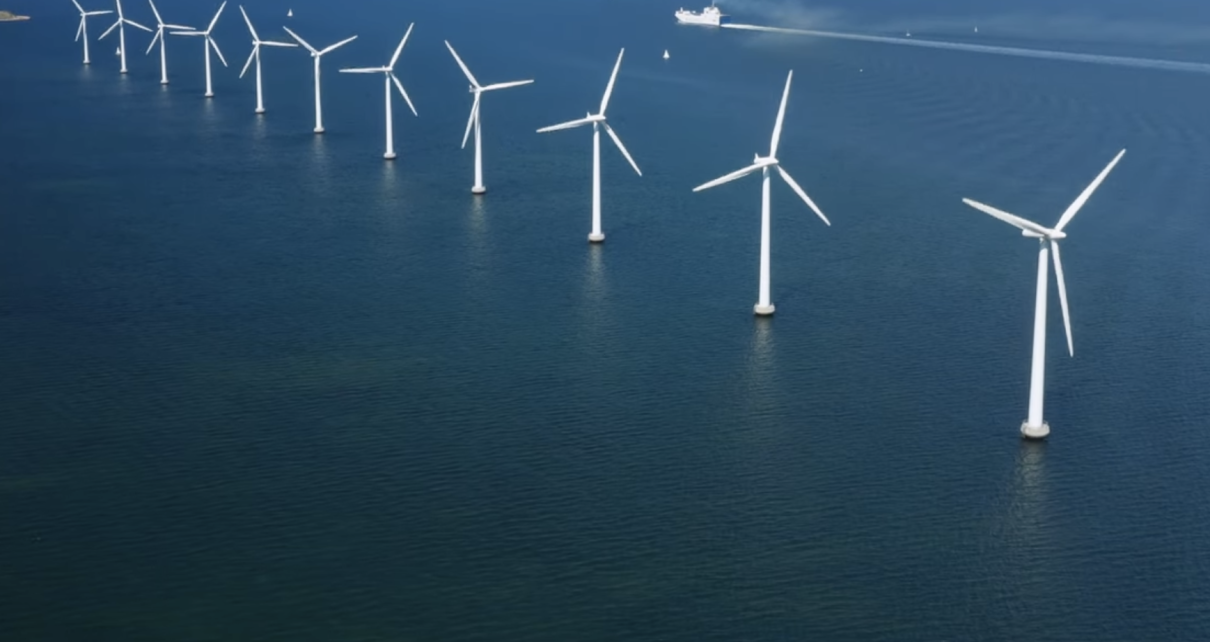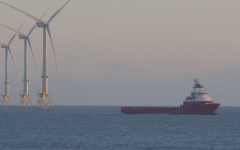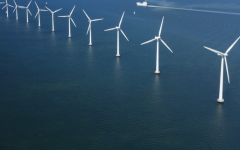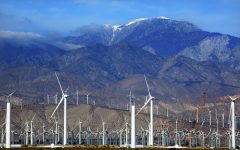
Offshore Wind farm. (Photo: Energy.ca.gov)
NOAA Permits Wind Energy Operators to Harass and Kill Whales
Wind energy companies are complicit in a state-sanctioned, modern-day butchery of marine mammals along the U.S. East Coast
By Vijay Jayaraj, April 29, 2024 9:23 am
Wind energy is clean and green. It is the magic switch to turn off global heating. And unicorns are real. You may name your most cherished illusion among those three if you please. But it will not change the fact that the National Oceanic and Atmospheric Administration (NOAA) and wind energy companies are complicit in a state-sanctioned, modern-day butchery of marine mammals along the U.S. East Coast.
NOAA-issued permits allow each operator of wind turbines to kill or harass 100s of whales annually, a fact that climate doomsayers and green energy enthusiasts ignore or deny in a manner reminiscent of flat-earthers dismissing photographs of our blue sphere suspended in the void of outer space.
NOAA: From Whale Hero to Whale Villain
On its website, NOAA claims that it works “to protect marine species populations from decline and extinction, conduct research to understand their health and environment, and evaluate and monitor human activities that might affect them to ensure future generations may enjoy them.”
NOAA says that the Marine Mammal Protection Act requires it to protect all whales, dolphins, porpoises, seals, and sea lions from “take” by U.S. citizens in the nation’s waters. “Take” is NOAA lingo for harassing, hunting, capturing, killing or attempting to do any of those.
However “exemptions” to this protection are granted to allow lethal and non-lethal interference with cetaceans — whales, dolphins and porpoises — by wind energy developers along the Eastern Seaboard.
Known as “Incidental Take/Harassment Authorizations” (IHAs), these exemptions give wind operators latitude within the regulation to kill and harass marine mammals while carrying out sonar surveys for site characterization and other activities related to construction and operations.
The species authorized to be harassed in these IHAs include the endangered North Atlantic right whale, fin whale, sperm whale, sei whale, minke whale, humpback whale, long-finned pilot whale, Atlantic white-sided dolphin, common bottlenose dolphin, short-beaked common dolphin, Atlantic spotted dolphin, Risso’s dolphin, harbor porpoise, harbor seal and gray seal.
For example, Bluepoint Wind, LLC, is allowed to kill or harass 270 whales, including 11 right whales and 149 minke whales between March 2024 and February 2025 in the coastal waters of New York and New Jersey, a region known as the New York Bight. The “harassment” quota includes other marine mammals as well.
Other active IHAs for wind operators include the following: Dominion Energy Virginia, 599 whales in the next five years, including 17 Endangered right whales); Empire Offshore Winds, 509 whales; Ocean Wind, 248 whales; TerraSond, 381 whales; Community Offshore Wind, 7,809 dolphins; Orsted Wind Power North America, 6,000 short-beaked common dolphin. There are many others.
NOAA divides these IHAs into two categories: Level A harassment results has the potential to injure or kill, while harassment at the Level B may cause changes in behavioral patterns. Most of the authorizations listed above are Level B, but many of the companies have been authorized for Level A for various species, including the endangered North Atlantic right whale.
Please note that the most common cause of death for whales on the eastern seaboard of the United States is from entanglements or vessel strikes. Level B harassment may indirectly lead to increased whale deaths by forcing them into busy shipping channels.
It is critical to note that the NOAA does not give scientific reasons to prove that Level B harassments are non-lethal or that they would not cause permanent injury.
The bipolar NOAA itself admits that humpback whale deaths along the Atlantic Coast have been unusually high since 2016, with the highest count of 37 in the year 2023 being when IHAs were more common. Similarly, NOAA has documented the unusual mortality rate of the North Atlantic right whales since 2017.
The question is why would NOAA authorize wind companies to harass and kill whales at a time of increasing deaths? And who gives NOAA permission to do so?
NOAA’s treatment of these marine mammals contrasts starkly with its institutional ethos of shielding these gentle ocean giants from peril and even demise. Instead, NOAA has seemingly embraced offshore wind farms with the unwavering resolve of climate alarmists.
Frankly, I’ve grown weary of ceaseless calls for more evidence connecting animal mortality with wind energy activities and, all the while NOAA authorizes more killing.
- U.S. Energy Shift Offers Economic Hope to Global South - October 17, 2025
- India’s Ethanol Gambit: A Muddled Climate Policy - September 22, 2025
- Hanoi’s ‘Green’ Path to Poverty and Blackouts - September 2, 2025





The “green” cabal should more appropriately be named the RED cabal, as they are covered with the RED BLOOD of all the animals that they kill with their windmills (birds/raptors, etc.) and now all manner of marine animals, which will be harmed by the sub-ocean HARMONICS created by the noise created by THESE windmills…
All divers are taught that water amplifies sounds and sound travels far under-water, as tank-taps are used to get the attention of dive-buddies…
The noises that these windmills will make while operating will travel FAR undersea, adversely affecting the wellbeing of marine life…
WINDMILLS are NOT a viable source for mainstream energy production, no matter WHAT these enviro-whackos think it is….
Thank you.. Excellent comment.
Land-based windmill operators have long been allowed to kill bald eagles and other endangered species. Now, ocean-based windmill operators can annoy or kill whales and other cetaceans.
To what deity are these animal sacrifices being offered?
Excellent comment.
It is irresponsible to publish this. No sources are sited. Let me site a few, straight from NOAA Fisheries’ Frequent Questions—Offshore Wind and Whales: At this point, there is no scientific evidence that noise resulting from offshore wind site characterization surveys could potentially cause whale deaths.
There are no known links between large whale deaths and ongoing offshore wind activities.
NOAA Fisheries does not anticipate and has not authorized—or proposed to authorize—death or serious injury of whales for any wind-related action.
Offshore wind developers have not applied for, and NOAA Fisheries has not approved, authorization to kill any marine mammals incidental to offshore wind site characterization surveys or construction activities.
Concerned citizen, there are links throughout the article sourcing the information, including NOAA’s 2017–2024 North Atlantic Right Whale Unusual Mortality Event – https://www.fisheries.noaa.gov/national/marine-life-distress/2017-2024-north-atlantic-right-whale-unusual-mortality-event
-Editor
Whales?
In 2018, more than 1000 whales, dolphins and porpoises were washed up on UK beaches – coinciding with the expansion of the offshore wind industry.
Details of the Cover-up here —
https://jasonendfield.medium.com/uk-govt-rejects-request-to-share-whale-stranding-data-fuelling-suspicions-over-offshore-wind-farms-65b6ffb80e5d